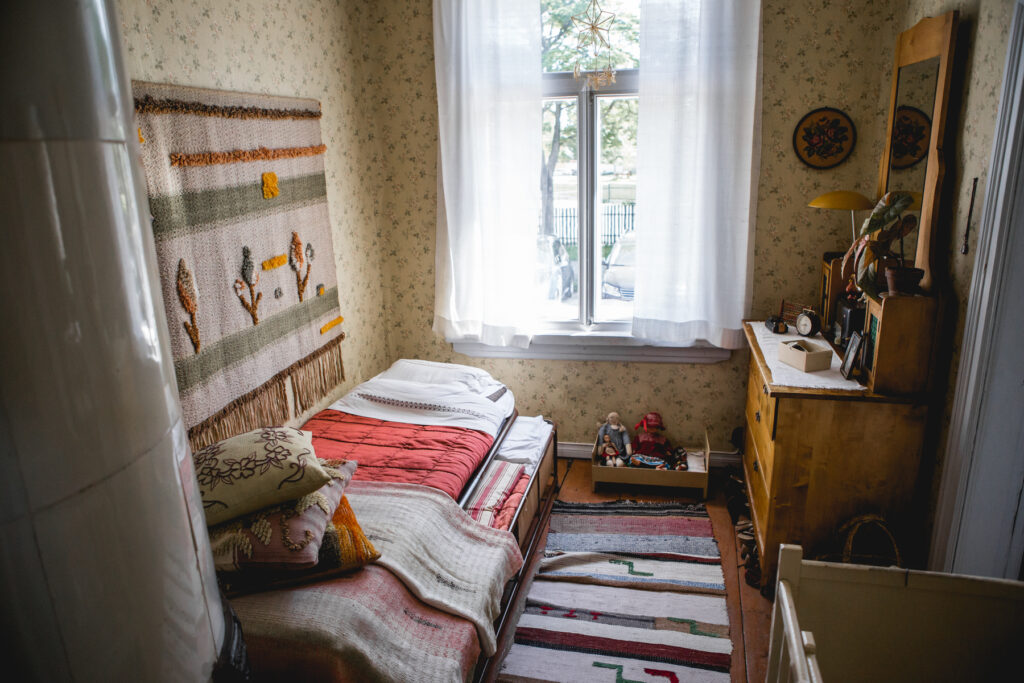The Korsman House

In the south end of the Korsman House there is an apartment with two rooms and a kitchen, furnished as the home for a fictional Korsman family of two children in 1951. The Korsman family story is based on the interviews of the people who have lived both on the Toivo site and elsewhere in the V and VI districts of Pori after the war. A family named Korsman actually lived in the house in the years 1896–1917.
It is allowed to touch all the objects when visiting the Korsmans.
The Korsmans
The Korsman family “lives” in the Korsman House in 1951. The father Olavi Emil was born in 1921. After Olavi returned from the war he met his future wife Kaarina Maria, born in 1926. They married in 1946. The family has two children, Tuula Maria, who was born in 1947, and Pentti Olavi, who was born in 1950. Olavi is a policeman, Kaarina is a homemaker.
The first home of the young couple was a room in which they were subtenants, but as their family grew, they had to find a bigger rental apartment. Many of Olavi’s police mates rented apartments near the police station in the V district, in the buildings in the corner of Varvinkatu and Steinheilinkatu, owned by a policeman’s widow Fiina Aalto. There, in the building along Varvinkatu, the Korsmans rented their roomy apartment of two rooms and a kitchen.
The largest room in the apartment is the fine living room, with nicer furniture, pictures on the walls, decorative objects and the radio, from which the family can listen to Uncle Markus’s children’s programme on Thursdays or music requested by the listeners on Saturdays. The living room is mostly used on Sundays or when there are visitors. Mother’s sewing machine is in the room by the window, however, because there is no room for it anywhere else.
In the bedroom there are the parents’ steel spring bed and a mirrored dresser as well as little Pentti’s crib. When Pentti was born, Tuula had to move to the kitchen to sleep in an old chair bed obtained from relatives.
The everyday life of the family is centred in the kitchen. Firewood is fetched from the basement, water from the well, potatoes, herrings and lingonberries from the cellar, but the milk will keep in the cold cabinet on the porch when it’s the colder part of the year. It is the shortage period and coffee is rationed, but the Korsmans received a donation package from America, and in there was real raw coffee beans that had to be roasted on the stove. After that the coffee is ground in a coffee grinder. The coffee cups are in a neat row in the cupboard, waiting for visitors.
The Korsman House is designed to be a nostalgic journey in time to the Pori of the present-day children’s grandparents. During the school year it is primarily used for heritage education purposes, aimed at all ages from pre-schoolers to adult learners. The visits are designed regarding various age groups, so that when the smallest school children get to fetch the firewood from the basement, grind coffee beans and try the pullamosso treat, the older visitors have a more verbal introduction to the life in the Pori of 1950s. The Korsman House is also open for public during events, in the summer and by appointment.